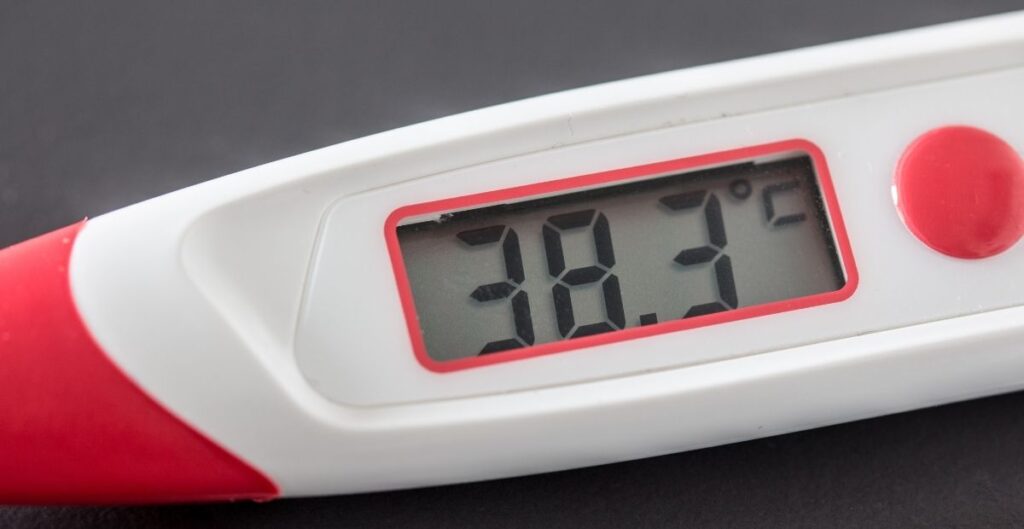Now Reading: How Do You Check Dog’s Temperature? A Quick & Safe Method Vets Approve
- 01
How Do You Check Dog’s Temperature? A Quick & Safe Method Vets Approve

How Do You Check Dog’s Temperature? A Quick & Safe Method Vets Approve
Let’s be real—when your pup isn’t their usual energetic self, the first question that hits is, “Do they have a fever?” Knowing how do you check dog’s temperature at home is a lifeline for any pet owner. This guide walks you through the safe, accurate method vets use, explains what’s normal, how to tell if your dog has a fever, and how to comfort a dog with a fever.

Why Checking Your Dog’s Temperature Matters
Dogs don’t sweat like humans—they cool down through panting and their gut lining. So if they’re acting sluggish, shivering, or off-color, next step is often temperature check. Using a thermometer is far more reliable than guessing.
You May Also Need to Read: Facts About Canine Parvo Virus You Must Know in 2025
What’s a Normal Dog Temperature?
A dog’s normal body temperature is 101 to 102.5°F (38.3 to 39.2°C). Above that, and you’re likely dealing with dog fever. Remember, small breeds and puppies might read slightly higher—but consistency is key. Multiple readings will give you the clearest picture.
Step-by-Step: How Do You Check Dog’s Temperature Safely
- Grab the right tool
Use a digital thermometer labeled for pets. It’s quicker and less scary for your pup than glass ones. - Prep instructions
Apply a dab of petroleum jelly to the thermometer tip. Choose a quiet spot, calm your pup, and maybe have help from a second person. - Positioning
Gently lift your dog’s tail, insert the thermometer about 1–2 inches into the rectum, and hold until it beeps. - Read it
Remove, wipe clean, and read the temperature. Now you have a clear answer, not just a guess.
Also Read: Dog Being Sick Yellow: A Sign of Serious Trouble?
How to Tell If a Dog Has a Fever

Knowing what’s normal, you can spot a fever. If the reading hits 103°F or higher, it indicates dog fever. Here are the possible signs:
- Panting, lethargy, or shivering
- Loss of appetite or refusal to eat
- Red eyes, dry nose, or dry mouth
- Vomiting or diarrhea
- Cloudy nose, warm ears, or glazed eyes
If these symptoms appear, a vet visit is wise—fevers often signal infection or illness.
What to Do When You Detect a Fever
Home Care for Low-Grade Fevers (102.6 – 103 °F)
- Provide fresh water and let them hydrate
- Organize a quiet, cool resting space
- Use a damp cloth to gently cool their ears, paws, and belly
- Offer bland food like boiled chicken and rice
When to Call the Vet

- Temperature above 103°F or below 100°F
- Fever lasting more than 24 hours
- Serious symptoms like vomiting, diarrhea, seizures, bleeding
- Distress, refusal to drink, or worsening behaviour
How to Comfort a Dog with a Fever
Here’s how to ease the pain while recovery begins:
- Keep their resting spot calm and warm
- Bring water near sweet spots (nose height on sofa or floor)
- Offer light foods—even a spoonful of wet dog food helps
- Cuddle gently with soft strokes
- Follow any vet-prescribed meds at the exact scheduled times
Secret Vet Tips You Should Know
- Towel wrap technique: Wrap your dog loosely in a towel to help them relax for the temperature check
- Prompt reading: Rectal thermometers beep fast—grab the result and remove quickly
- Ear thermometers? Not accurate. Stick with the rectal method—the one vets trust
- Cooling vests: For dogs that overheat easily, a cooling wrap (wetted before use) is a smart comfort tool

Mistakes to Avoid
- Don’t guess based on behavior alone—always confirm the temperature
- Never use a human thermometer—it won’t give the right reading
- Avoid warm bathing to reduce fever—it can worsen internal temps
- Don’t medicate with human meds like acetaminophen or ibuprofen—they’re toxic to dogs
Final Thoughts
Knowing how do you check dog’s temperature is more than a skill—it’s a way to look after your pup’s health. Safe measurement, understanding what’s normal, and gentle care all help your dog feel better fast. If the fever persists or you worry, visit the vet—early help helps prevent bigger problems.
FAQs
No—rectal reading with a digital pet thermometer is the most accurate method.
Not necessarily. Nose temperature tells little. Always rely on an accurate thermometer reading.
Below 100°F is considered low and could signal shock or hypothermia. Seek vet help instantly.
Once or twice daily is enough unless symptoms worsen. Keep note of rises or drops for vet info.













